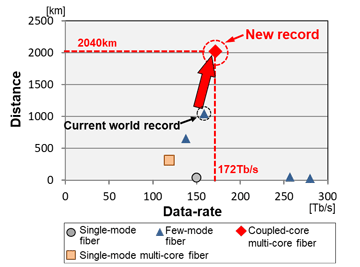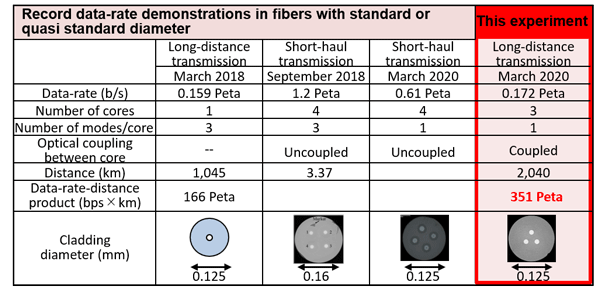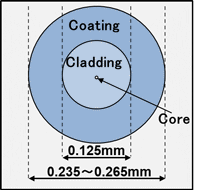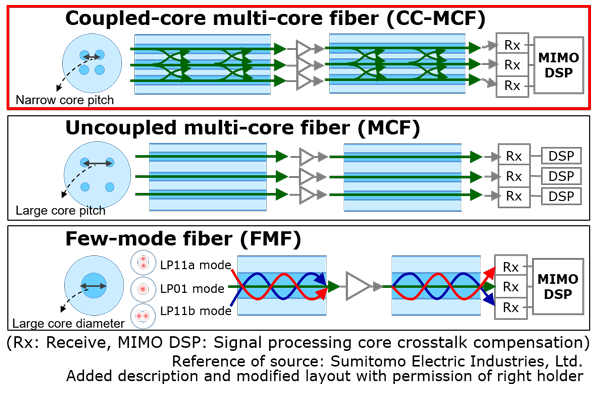World Record Transmission of 172 Terabit/s over 2,040 km Distance Coupled-3-core Multi-core Fiber
April 2, 2020
National Institute of Information and Communications Technology
Points
- A world record for high-capacity, long-haul transmission in standard diameter optical fibers was achieved in coupled-3-core multi-core fiber with characteristics similar to multi-mode fibers.
- The signal processing complexity is significantly reduced compared to multi-mode fibers.
- The fiber type is promising for early adoption in backbone high-capacity transmission systems as it can be cabled with the same technology.
Background

Achievements

Future Prospects
References
Title: 172 Tb/s C+L Band Transmission over 2,040 km Strongly Coupled 3-Core Fiber
Previous NICT Press Releases
Appendix
1. Description of the novel transmission system

2. Experimental Results

Glossary


Technical Contact
AWAJI Yoshinari, FURUKAWA Hideaki
Photonic Network System Laboratory
Network System Research Institute
NICT
Tel: +81-42-327-6337, 5694
E-mail:





















Media Contact
HIROTA Sachiko
Press Office
Public Relations Department
Tel: +81-42-327-6923
E-mail:





















